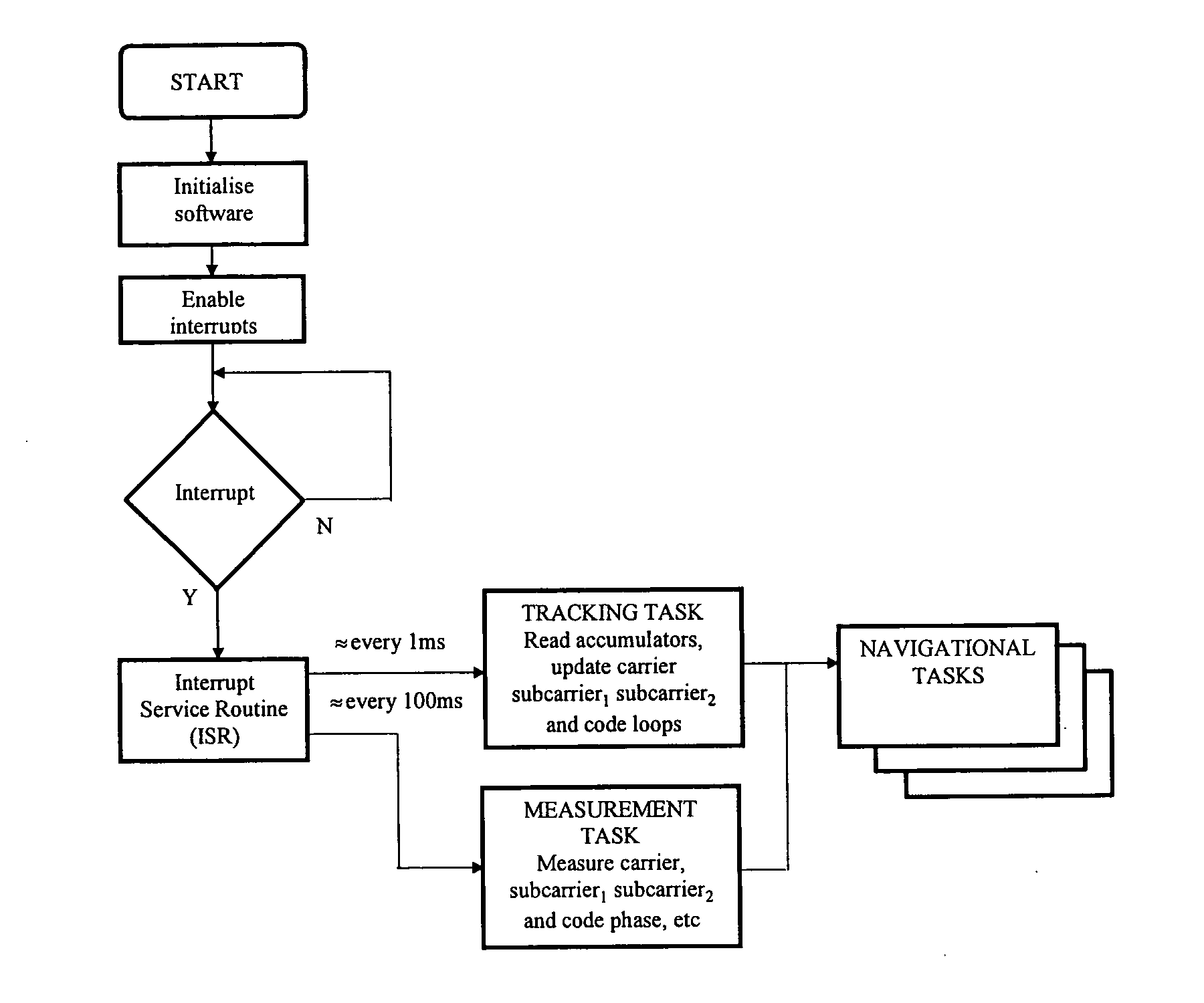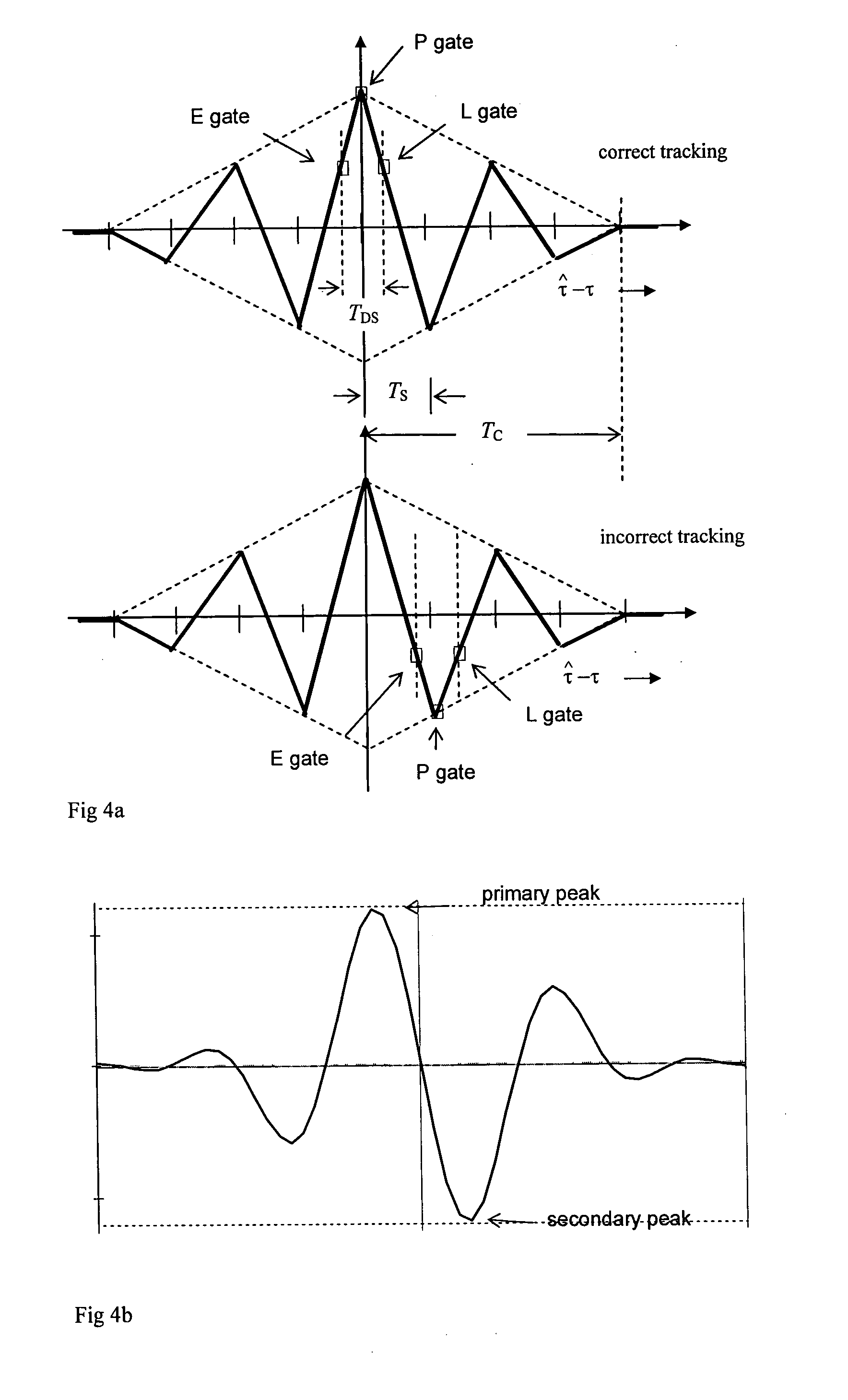Receiver of multiplexed binary offset carrier (MBOC) modulated signals
a multiplexed binary offset carrier and modulation technology, applied in pulse technique, amplitude demodulation, instruments, etc., can solve the problem of computational time-consuming delay of the received signal, inherent ambiguity in the delay estimate for a boc signal provided by the conventional delay estimation technique, and significant waiting time before the delay estimate can be relied on. the effect of multipath
- Summary
- Abstract
- Description
- Claims
- Application Information
AI Technical Summary
Benefits of technology
Problems solved by technology
Method used
Image
Examples
Embodiment Construction
[0061]Referring to FIG. 7, an MBOC receiver 1 according to a first preferred embodiment of the present invention is arranged to receive a MBOC modulated signal via a right-hand circularly polarised antenna 2. The antenna 2 feeds the received signal to a pre-amplifier 3, which includes a filter for filtering the received signal, a circuit for blocking strong interfering signals and a Low Noise Amplifier (LNA) for amplifying the received signal. The LNA effectively sets the receiver's noise figure, normally around 2 dB, and provides around 30 dB gain. The pre-amplifier 3 feeds the filtered, amplified signal to a down-converter 4 for a first stage down-conversion of the signal to a suitable intermediate frequency (IF). The signal is down-converted in multiple stages and filtered to eliminate unwanted image signals.
[0062]The down-converter 4 feeds the down-converted signal to an Analogue to Digital Converter (ADC) 5 for converting the signal to the digital domain. The ADC 5 can quantise...
PUM
 Login to View More
Login to View More Abstract
Description
Claims
Application Information
 Login to View More
Login to View More - R&D
- Intellectual Property
- Life Sciences
- Materials
- Tech Scout
- Unparalleled Data Quality
- Higher Quality Content
- 60% Fewer Hallucinations
Browse by: Latest US Patents, China's latest patents, Technical Efficacy Thesaurus, Application Domain, Technology Topic, Popular Technical Reports.
© 2025 PatSnap. All rights reserved.Legal|Privacy policy|Modern Slavery Act Transparency Statement|Sitemap|About US| Contact US: help@patsnap.com



